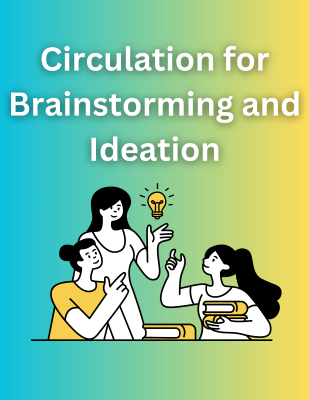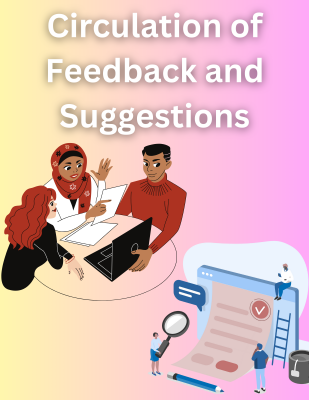Hi all, as promised, here is the first of two follow-ups to last week’s preview of our Conference theme. In this post, I’ll be discussing the role of Circulation in Ideation and Feedback. Later this week another post will cover Circulation as Rhetorical Context with a summary of our tour of Circulation.
 Circulation for Brainstorming and Ideation:
Circulation for Brainstorming and Ideation:
Thinking back to the library, any specific book that gets added to a collection is shaped by and in response to the active ecosystem of texts, social contexts, culture circulating in and around that library. New writings Engage with their conceptual antecedents, adopt (or reject) established genre conventions of form and style, and augment these precedents according to present social discourse, cultural trends, political, and physical environments. Moreover, which texts are accessible is also directly related to the social and political powers/movements governing circulation. This directly influences the writing that can be engaged with, directly influencing the ideation phase of writing and thinking. And as soon as a new book enters into the library, it becomes a part of the circulating texts and contexts that will shape subsequent readings and writings.
During the conference, we will explore what Circulation as a tool and context for brainstorming and ideation looks like and how it can be emphasized in the FYW classroom. For example, it may prove valuable to consider that in any ECE writing class, when we ask students to Collect perspectives, Engage with difficult texts, and Contextualize their research question/inquiry, the circulating texts they encounter engender ideation and brainstorming.
The act of reading, and the thoughts and responses in the margins and/or in the mind of the reader, is a product and practice of Circulation. A circulating text stimulates ideation as the reader “talks” back to the text during their reading. Students’ responses to an inquiry and text circulate in the classroom as they share initial thoughts—writing ideas and questions in their infancy. In a collaborative brainstorming session or class discussion, students’ conversations influence each other’s thinking, which in turn promotes self-reflection and a consideration of alternative perspectives that helps them develop these future writing ideas.
We hope to discuss methods of working with students to help them recognize that participating in the Circulation of ideas in a public ecosystem is not only about “putting our writing out into the world.” It also consists of receiving, responding to, and then interrogating those responses in a way that helps us come up with concepts they can develop in writings that will make meaningful contributions to that ecosystem. We want students to see that they are participating in Circulation in every phase of writing.
Circulation of Feedback and Suggestions: 
Similarly, the Circulation of feedback and suggestions helps students further develop their writing. When I think of the editing of a book, I am imagining the cinematic portrayals of an author bickering with their editor about what gets included. Or maybe the editor poses a question that prompts a total rewriting or reconsideration of an author’s stance. As feedback discursively circulates between editor and author it cultivates a more thoughtful reflection on the piece of writing, its goals, and its method in a fashion that is ultimately generative. When “editing” a library, staff must first reflect on which materials are being (or not) circulated most by patrons. This then informs the “editing” of their collection—what materials are weeded and what materials are added—to help the library best serve the needs of its patrons, i.e., achieve its purpose. And this does not take place in a vacuum but features a discussion amongst multiple librarians and between staff and patrons as they “revise” and “refine” the library.
The FYW classroom is a comparable space; students circulate their work as they collaboratively revise and refine their writing to more effectively achieve their compositional goals. Group workshops and peer-review offer a low stakes environment where students can gauge audience reception, find alternative perspectives, receive feedback, and work together to develop their own and others’ compositions. These drafting and revision activities grant them freedom to experiment radically or minutely with their writing. Practicing how to provide and receive feedback—inside and outside the classroom—encourages students to reflect on their writing and its goals and how they might best achieve them. During the conference, we will explore ways to capitalize on the opportunities for growth and learning that Circulation affords during these activities. We also look to share and discuss the various forms, uses, and struggles of giving and receiving feedback.